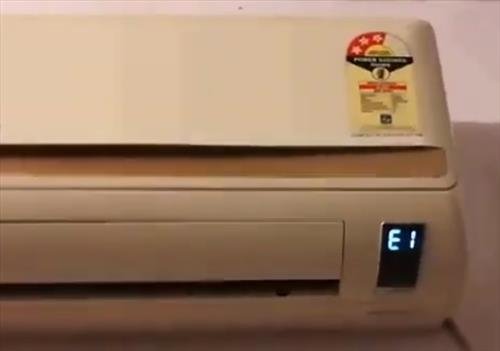
In simple terms, when your Honeywell air conditioner displays an E1 error code, it’s like your car’s dashboard lighting up to signal a problem. It usually relates to a malfunction in the temperature sensor, which is the component responsible for making sure your AC knows how hot or cold it is inside your home. Think of it as a thermostat’s little helper. If it encounters trouble, the AC might not function as efficiently, or at all. So, understanding and addressing this error code is crucial for restoring comfort to your living space.
Understanding the E1 Error Code
The E1 error code is essentially a message from your air conditioner, indicating that something’s not quite right with the temperature sensor. Imagine it like the system’s way of saying, “Hey, I can’t do my job right now because something’s off.” This sensor plays a pivotal role in regulating the air conditioner’s performance. In simpler terms, it’s similar to a coach constantly monitoring the players’ performance in a game. If the coach can’t get accurate information, the players won’t perform optimally.
Now, what happens if this sensor is faulty? Well, the air conditioner might not know when to start or stop cooling. It could either run endlessly or not at all, which isn’t ideal, right? But why does this issue happen in the first place? Sometimes, it could be due to dust or debris interfering with the sensor’s functionality. At other times, it might have a more technical issue, like a loose wire or a communication breakdown within the system.
To begin troubleshooting, you’ll want to check whether the sensor is visibly damaged or obstructed. Make sure it’s clean and positioned correctly. This might sound technical, but it’s a bit like making sure your phone charger is connected properly before assuming it’s broken.
Common Causes of the E1 Error Code
Let’s delve into why your Honeywell air conditioner might display the E1 error code. It’s not always doom and gloom; sometimes the cause is quite straightforward. Just like a computer needing a reboot, your AC might need a quick check-up.
Firstly, one of the most common causes for an E1 error is a dirty or misaligned sensor. This component has to be clean and correctly positioned to function correctly. Have you ever tried to make a phone call with a smudged screen and it just doesn’t work right? That’s similar to what a dirty sensor does. Regular cleaning and maintenance can prevent this problem.
Another reason could be electrical issues, such as a loose connection. Wires inside the AC unit might loosen over time due to vibrations or wear and tear. Think of it like a loose headphone jack that causes your music to cut in and out. In the same way, a loose wire might cause occasional disruptions in the sensor’s communication with the main unit, triggering the E1 error code.
Lastly, environmental factors such as excessive humidity or drastic temperature changes might cause the sensor to misread the room conditions. It’s a bit like suddenly finding yourself in a different time zone without adjusting your watch. These fluctuations can throw off the readings, leading to an E1 error.
How to Fix the E1 Error Code
Now that we’ve identified what might be causing the E1 error, let’s talk fixes. Before you start unscrewing panels or fiddling with wires, switch off the air conditioner and unplug it from the power source for safety. Turning it off and on again sounds cliché, but it often resets minor glitches, just like rebooting a computer.
If the error persists, inspecting the temperature sensor is a good next step. Check for any visible dirt or physical damage. Be gentle, as it’s a delicate component. A soft cloth or a gentle vacuum can remove dust, much like you’d clean a camera lens. If cleaning doesn’t solve the issue, ensure that all the electrical connections to the sensor are tight and secure.
If you’re not comfortable handling these parts or DIY didn’t fix the issue, it might be time to call in a professional. They have the expertise to accurately diagnose and fix the problem. You wouldn’t attempt to fix the plumbing without a plumber, right? Sometimes expert intervention is the best course of action.
Preventing Future E1 Errors
You might be thinking, “How do I prevent this from happening again?” Here’s the deal: regular maintenance is key. Just like you wouldn’t skip an oil change for your car, keeping your AC unit in tip-top shape can prevent many issues from cropping up.
Start by regularly cleaning the filter and ensuring the unit’s surrounding area is free from dirt and debris. This simple step can prevent obstructions that might interfere with the temperature sensor. Picture it like keeping your home clutter-free to move around easily.
Make it a habit to schedule routine checks with a professional technician. They’d check the unit inside out, just like a wellness checkup with your doctor. It ensures all components are functioning properly and that any potential issues are nipped in the bud.
To wrap it up, while seeing an E1 error on your Honeywell air conditioner might initially feel daunting, understanding what it means and how to address it can take a load off your mind. With these insights, you’re now armed with the knowledge to tackle this inconvenience head-on and ensure a cooler, more comfortable home environment.